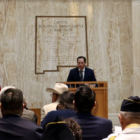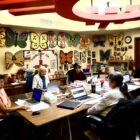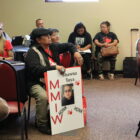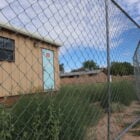Indigenous Affairs
Native advocates for missing and murdered Indigenous people denounce Lujan Grisham’s appointment to lead Indian Affairs
|
Gov. Michelle Lujan Grisham’s appointment of a former San Ildefonso Pueblo governor to lead the state’s Indian Affairs Department could be in peril as members of the state’s Missing and Murdered Indigenous Women and Relatives Task Force, and a Navajo state senator, say they will fight his nomination.The appointment of James R. Mountain to head an agency tasked with addressing violence against Native American women despite a rape charge against him 15 years ago, later dismissed, provoked outrage and sometimes tearful reactions from members during a task force meeting on Wednesday. The task force is one of four initiatives prominently highlighted on the agency’s website.
Two members were considering resigning from the task force if Mountain is confirmed, they said, and other members supported seeking a meeting with Lujan Grisham to protest Mountain’s nomination.“Our governor of the state needs to know that we are not OK with this,” Nambé Pueblo victim/legal advocate Chastity Sandoval said.
On Thursday, Lujan Grisham’s Director of Communications Maddy Hayden said the governor does not intend to withdraw Mountain’s nomination.
“We hope that those who are leveling these concerns would respect the judicial process and acknowledge the results,” Hayden wrote over email. Mountain’s appointment, announced by the governor on Feb. 3, must be confirmed by the state Senate while in session. The 2023 legislative session ends in three weeks, on March 18.
Navajo Nation Council Delegate Amber Kanazbah Crotty said the task force committed to create a safe space for sexual assault survivors and build trust with families of missing and murdered Indigenous people, and expressed dismay over the nomination.“I understand that we don’t have control over that decision, but what control we have is how we create a safe space in this task force and how we want to move forward to the work for the families,” Crotty said.









